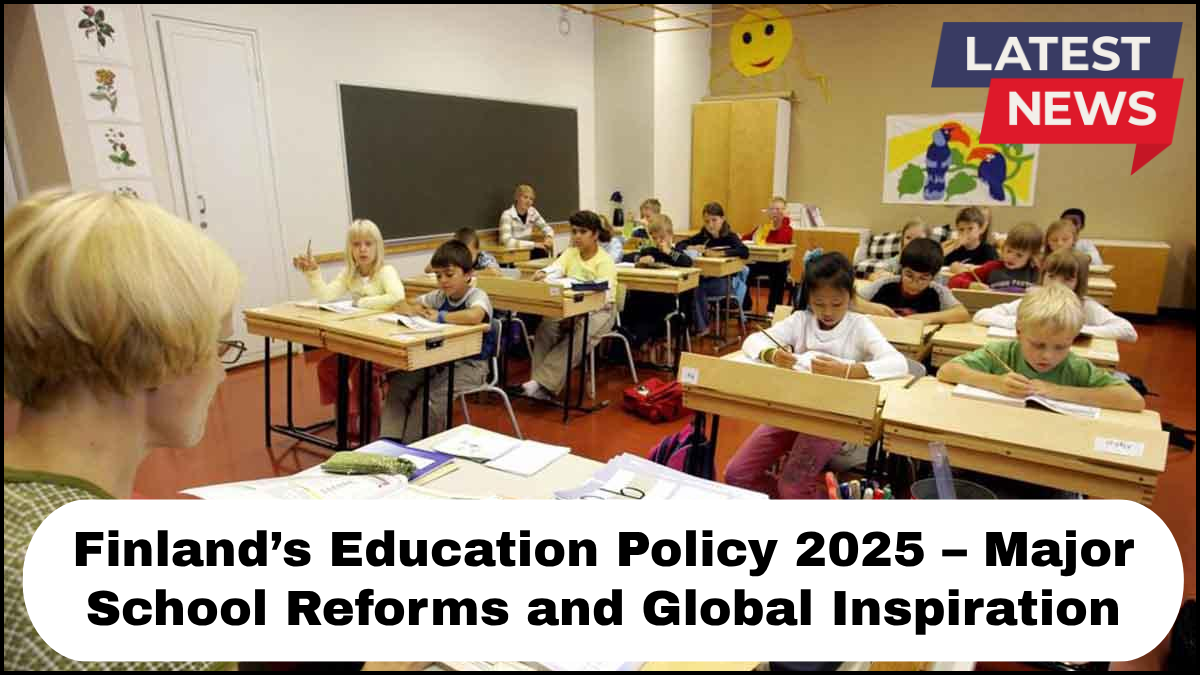Finland has long been recognized as a pioneer in education. Now, with Finland’s Education Policy 2025, the country is taking bold steps to future-proof its school system. This comprehensive policy initiative introduces a series of school reforms in Finland that not only address the needs of the 21st-century learner but also aim to inspire global education strategies. This article explores the key elements of the policy, the rationale behind the reforms, and how these changes position Finland as a model for innovative, inclusive, and sustainable education.

A Holistic Vision for Education
At the heart of Finland’s Education Policy 2025 is a commitment to holistic, learner-centered education. The policy shifts focus from standardized academic testing to developing life skills, critical thinking, and creativity. Finnish policymakers emphasize that education must not only prepare students for jobs but also for life, active citizenship, and global challenges.
One of the main goals is to ensure that all students—regardless of their background—have access to high-quality education. This means more tailored support for students with special needs, early intervention strategies, and investment in socio-emotional learning.
Key School Reforms in Finland
1. Curriculum Overhaul for Future Skills
The updated national core curriculum introduces stronger emphasis on interdisciplinary learning. Instead of siloed subjects, students engage in thematic modules that blend science, humanities, technology, and arts. For example, a project on climate change might combine biology, ethics, mathematics, and geography.
Digital literacy, entrepreneurship, and media education are also prioritized. These skills are seen as essential in navigating a complex, fast-changing world. By 2025, every school in Finland is expected to embed these elements into their core programs.
2. Teacher Empowerment and Professional Growth
Recognizing that teachers are the backbone of any successful system, the policy calls for significant investment in continuous teacher education. Teachers are given greater autonomy to design lessons, use innovative pedagogical approaches, and adapt materials based on student needs.
Mentorship programs, peer learning networks, and research opportunities are being expanded to ensure educators stay ahead of global best practices. Finland continues to require a master’s degree for teaching positions, reinforcing its commitment to teaching excellence.
3. Equity and Inclusion as Core Pillars
One of the most transformative aspects of the school reforms in Finland is the deepening focus on equity. Resources are being redistributed to ensure rural and underserved schools are equipped with modern infrastructure and digital tools.
In addition, multicultural education is being strengthened to support growing diversity. Finnish schools are adapting to better serve students from immigrant backgrounds, including expanding language support services and cultural orientation programs.
Environmental and Digital Transformation
Sustainability Education
Environmental responsibility is not an afterthought—it’s a foundation. By 2025, sustainability is embedded into all levels of the curriculum. Students learn about climate action, ecological systems, and sustainable lifestyles through real-world applications. Schools are also upgrading infrastructure to meet green building standards.
Digitalization and Smart Learning Environments
The policy supports a national strategy for digital transformation in schools. This includes increasing access to devices, high-speed internet, and cloud-based learning platforms. More importantly, students and teachers are trained in digital ethics, cyber safety, and data literacy.
Hybrid and remote learning models are also being refined to ensure resilience in times of disruption, such as pandemics or extreme weather.
Global Influence and Collaborative Learning
Finland’s Education Policy 2025 is already attracting international interest. Education leaders around the world are watching closely as Finland balances tradition with innovation. UNESCO and the OECD have both highlighted Finland’s approach as a blueprint for sustainable, inclusive, and future-ready education systems.
In turn, Finland continues to collaborate with countries in Asia, Africa, and Latin America to share best practices and support global education development. Exchange programs and teacher residencies are being expanded to foster international dialogue and learning.
Conclusion
Finland’s Education Policy 2025 is more than a reform plan—it’s a strategic vision that reimagines what education should be in a changing world. By integrating innovation with equity, and academic excellence with well-being, Finland reinforces its position as a global education leader. As countries grapple with how to educate the next generation, Finland offers not just inspiration, but a roadmap.
Frequently Asked Questions (FAQs)
Q1: What is the main goal of Finland’s Education Policy 2025?
A1: The main goal is to create a more inclusive, future-oriented, and skill-based education system that prepares students for both life and work in the modern world.
Q2: How are Finnish schools changing under this policy?
A2: Schools are introducing interdisciplinary learning, focusing on digital and sustainability education, and placing greater emphasis on student well-being and teacher autonomy.
Q3: How does Finland support teachers in this reform?
A3: The policy invests in continuous professional development, mentorship, and innovation grants for teachers, ensuring they have the tools and freedom to teach effectively.
Q4: Are these reforms applicable to other countries?
A4: While context matters, many elements of Finland’s Education Policy 2025—such as emphasis on equity, holistic learning, and teacher empowerment—can inform global education strategies.
Q5: How is technology being used in Finnish classrooms by 2025?
A5: Technology is integrated through smart classrooms, digital platforms, and hybrid models, supported by robust training in digital literacy and ethics.
click here to learn more